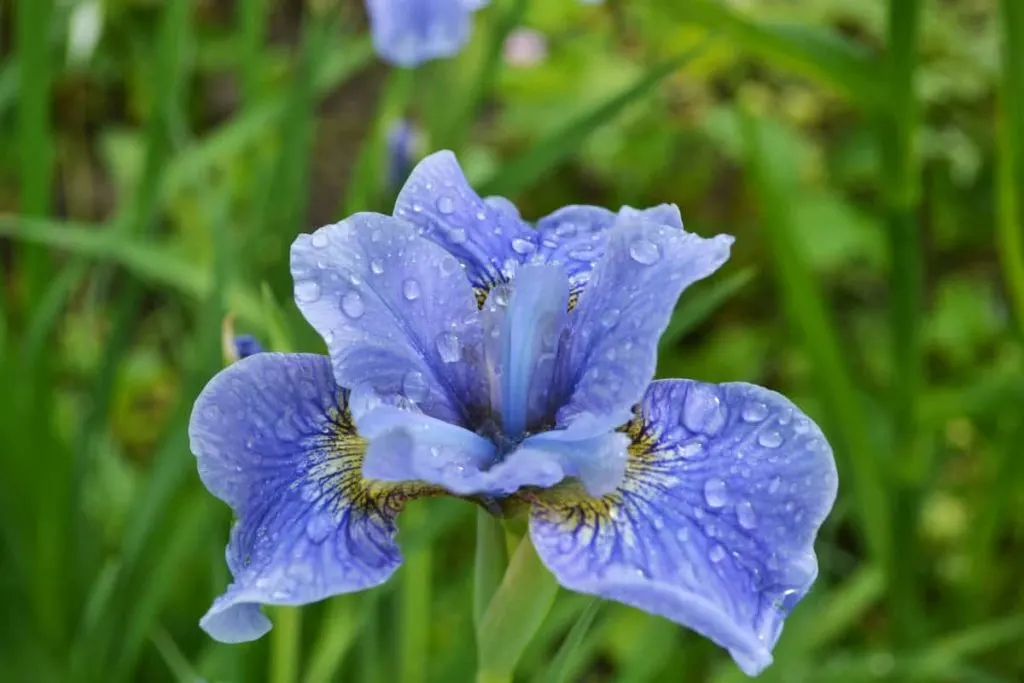
Many of us have that one stubborn spot in the garden that refuses to drain well. After the rain, water collects there are just doesn’t seem to dissipate, making it incredibly difficult to plant in.
But, before you give up on looking for a solution, take a look at these moisture-loving perennial plants. These won’t only tolerate these tricky areas of your garden, but will thrive there. They are also ideal for planting in bog gardens or along streams or ponds to add a little something extra.
On top of thriving in wet soil, these plants are generally easy to care for. When given the moisture they love, they will largely take care of themselves.
Iris
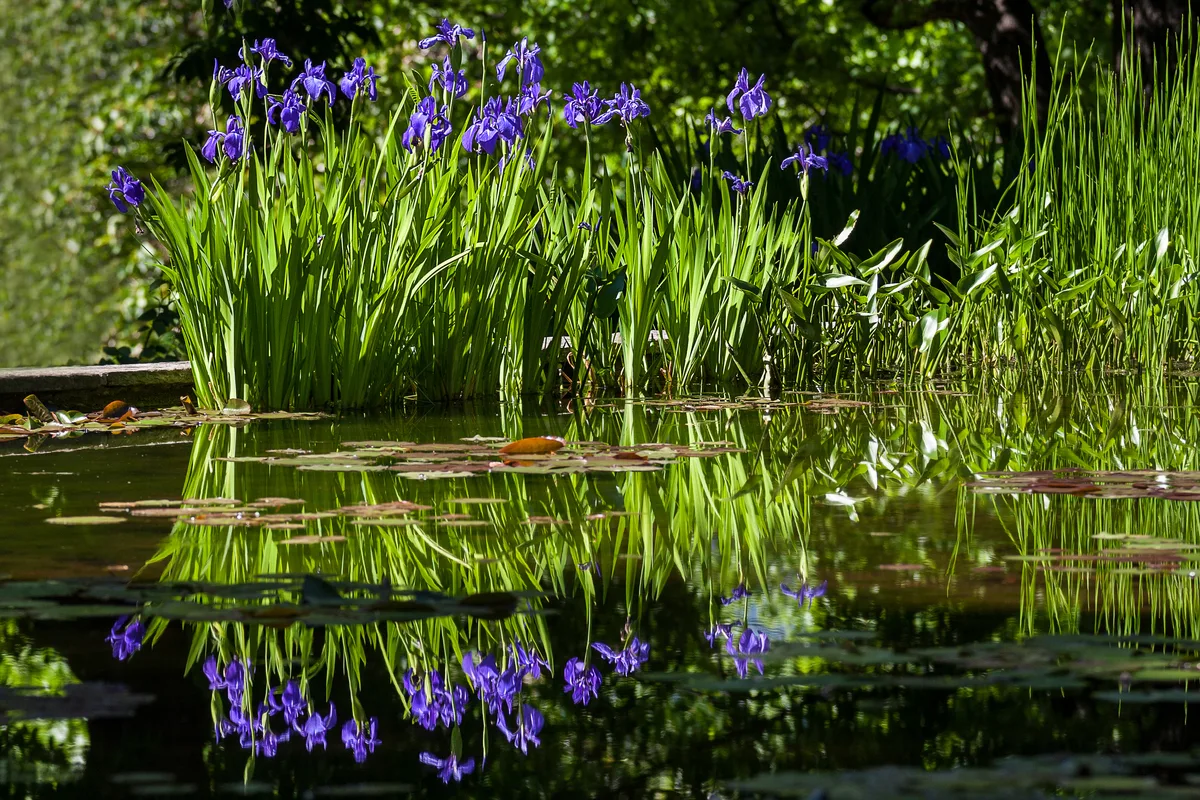
Found growing along riverbanks and in marshes, the iris is a classic water-loving plant. They put up intricate colorful blooms throughout spring and summer in a range of shapes and sizes, depending on the species you choose.
In fact, there are more than 200 different species to choose from. The most common is Iris germanica, a bearded iris. As long as the tall stems remain dry, the roots are happy to sit in consistently moist, fertile soil and actually prefer these conditions.
Hardy Hibiscus
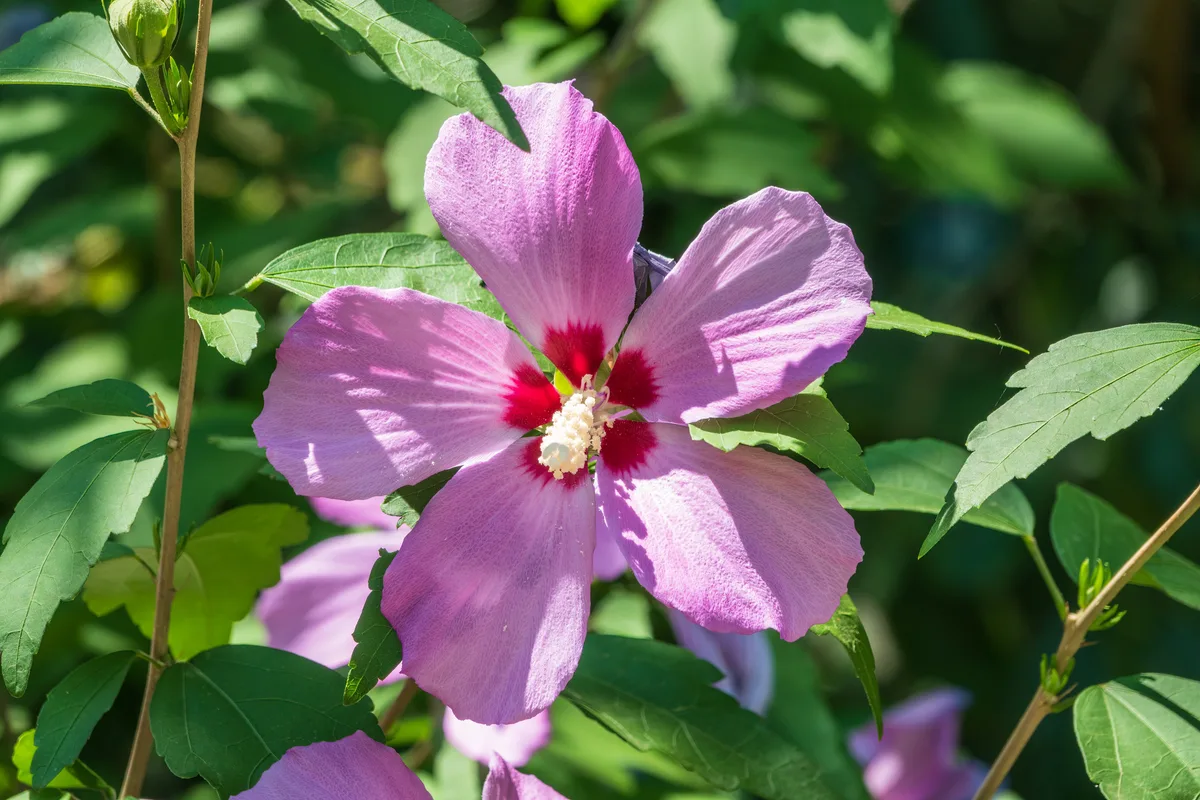
Hibiscus are stunning tropical beauties with large flowers that delight in any garden. While most require warmth and well-draining soil to survive, there are a few species with different native habitats that are ideal for areas with wet soil. Some of those are known as hardy hibiscus.
Native to wetland areas, these plants are happy to sit in wet soil for long periods. They are great for planting near ponds where their large blooms can truly shine in the sunlight. Choose from a number of interesting cultivars in red, white, pink and even blue.
Canna
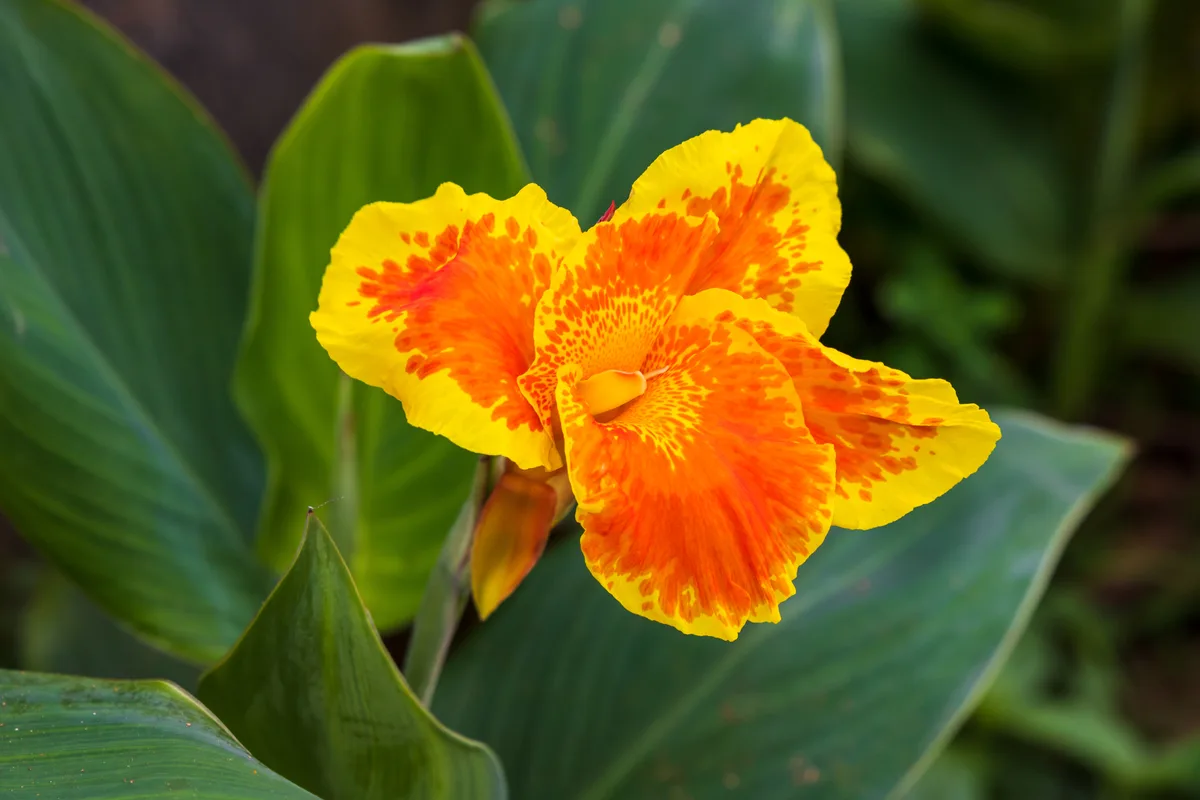
If you’re looking to add pops of bright, fiery colors to your garden, look no further than canna lily. Standing tall with upright soft leaves, the interesting spiked flowers provide wonderful contrast not only in shape, but also in color.
Canna lilies are regular members of bog gardens due to their affinity for moist, nutrient-rich soil. They are ideal for those areas of the garden where water tends to collect after the rain, making them difficult to plant in. While one or two plants will certainly stand out, these beauties look best planted en masse.
Spiderwort
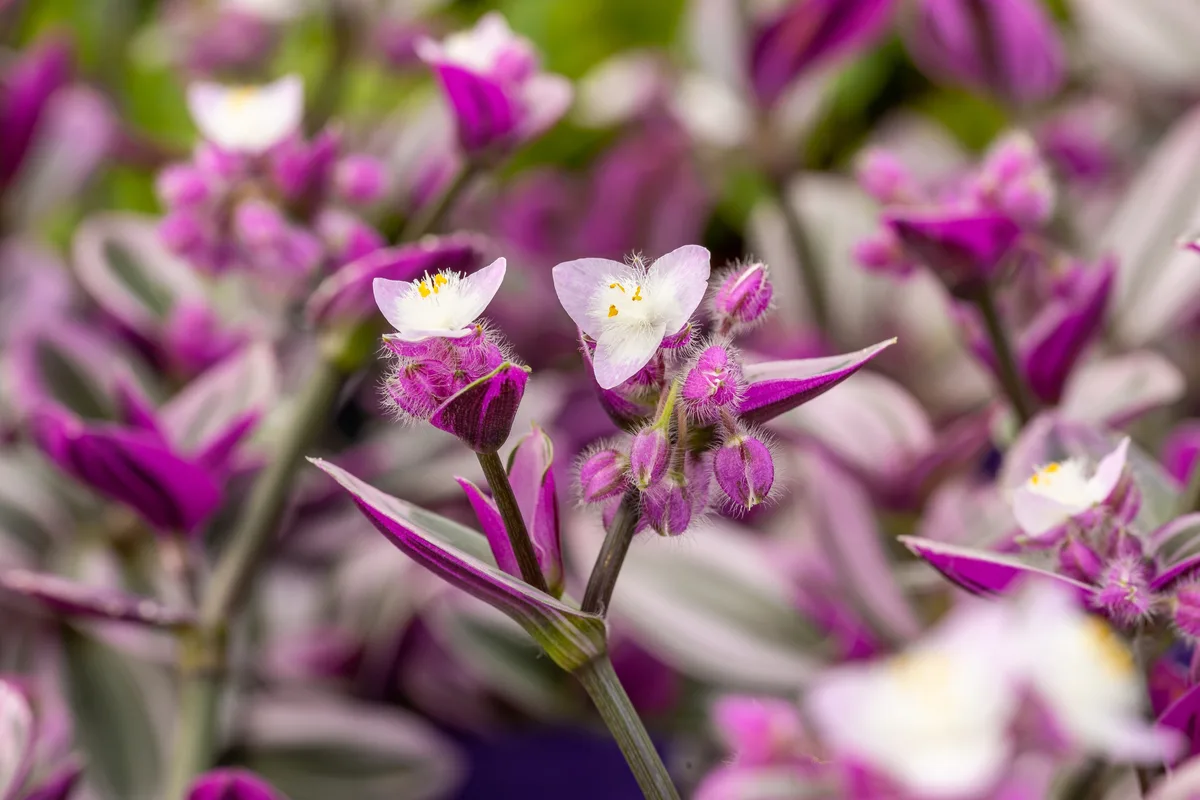
Scientifically known as Tradescantia, spiderworts have interesting flowers from purple to pink and white. Although the flowers only last a day, these plants are prolific bloomers, ensuring there is always some color to enjoy throughout the season.
Spiderworts are not accustomed to overly moist soil in their native habitats. But, as they are tolerant of a wide range of soil conditions, they can happily grow in wetter soil than usual for short periods. They may even flower better due to the consistent water supply, despite being somewhat drought tolerant.
Cardinal Flower
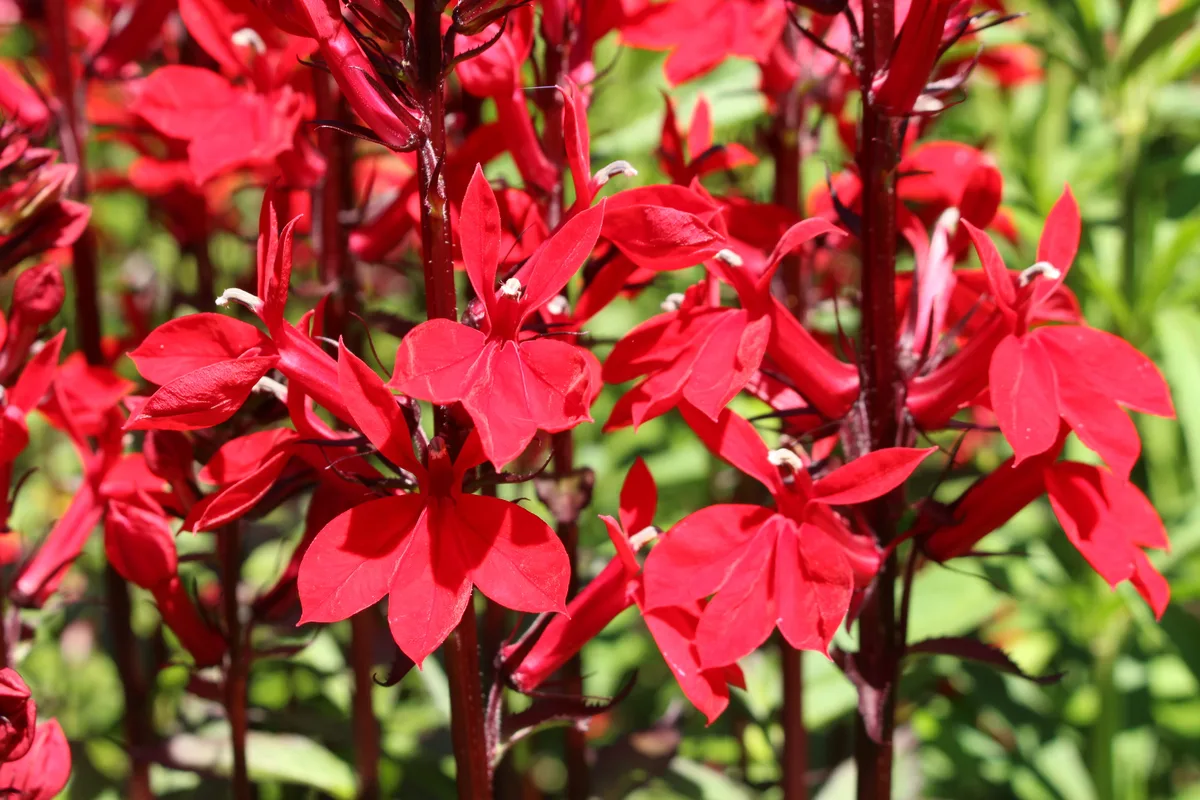
Lobelia cardinalis is famous for its deep red, striking blooms that attract a number of pollinators to the garden. And now, if that wasn’t enough of a reason to love them, you can add moisture-loving to the list.
In their native habitats, cardinal flowers are found growing along streams or other water sources and in areas with high rainfall. They love water more than most plants and will put up the most blooms in these conditions.
Calla Lily
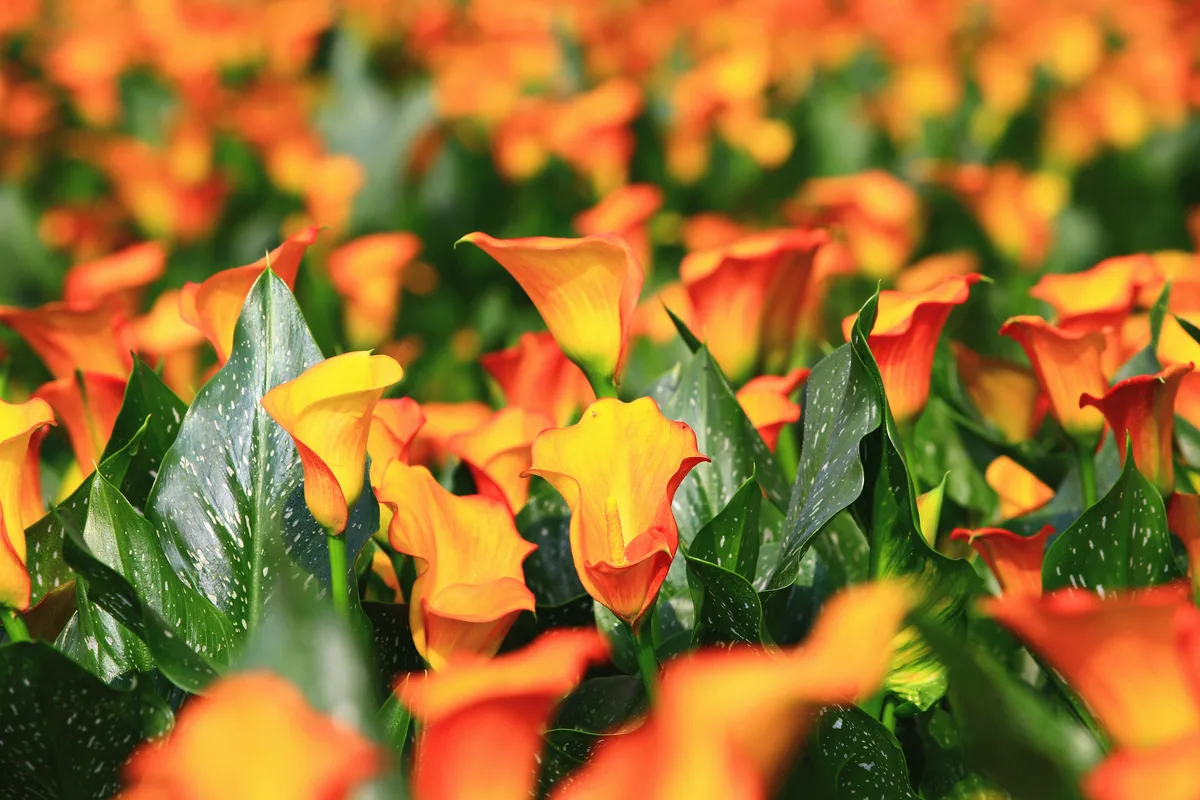
Not to be confused with the aforementioned canna lily, calla lilies are stunning plants in the Araceae family, related to popular houseplants like the peace lily. Native to South Africa, Zantedeschia is incredibly easy to grow due to its tolerance of a wide range of growing conditions.
Calla lilies are lovers of moisture and need plenty of it to push up their interesting and colorful flowers. However, they can’t handle overly waterlogged soil and so aren’t suitable for areas that flood frequently. The soil should stay moist but not sopping to avoid root rot.
Elephant’s Ear
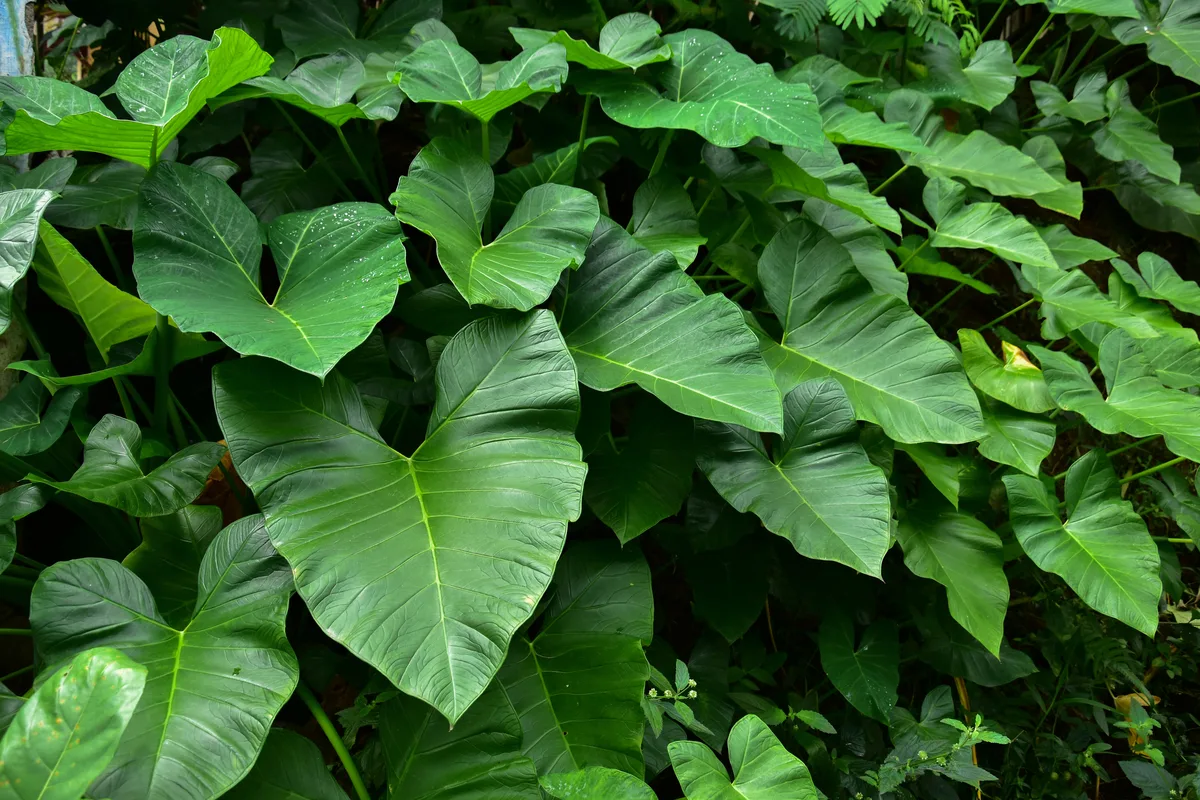
If you prefer foliage over flowers, elephant’s ear is for you. Colocasia esculenta (also called Taro) is a wonderful statement plant with massive green leaves that give an instant tropical look. They are also easy to grow, happiest when given moist, nutrient-rich soil.
It’s important to exercise caution when considering planting these tall leafy plants. They are classified invasive in tropical regions as the tubers tend to spread quickly in wetland areas, suffocating other plants and hogging nutrients. If you live in California, Florida, Alabama, George, or South Carolina, avoid these plants and opt for one of the others on this list.
Swamp Sunflower
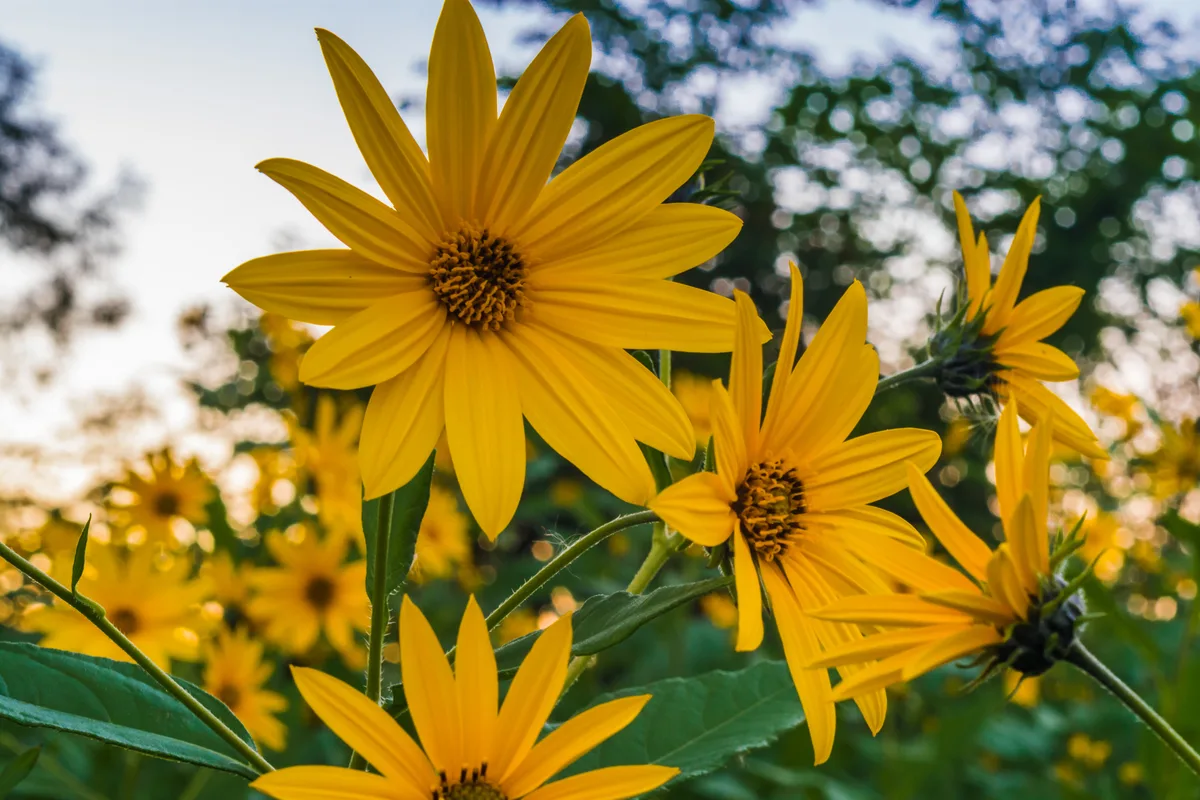
The common name of Helianthus angustifolius is enough to explain what kinds of conditions it likes. Native to the United States, the swamp sunflower is a perfect candidate for wet areas of your garden, brightening the area with its sunny flowers.
These plants also have the common name narrow leaf sunflower due to the shape of the foliage. This makes them ideal for pairing with large leafy plants for good contrast. The bright color of blooms are certain to stand out no matter what water-loving companion they are paired with.
Astilbe
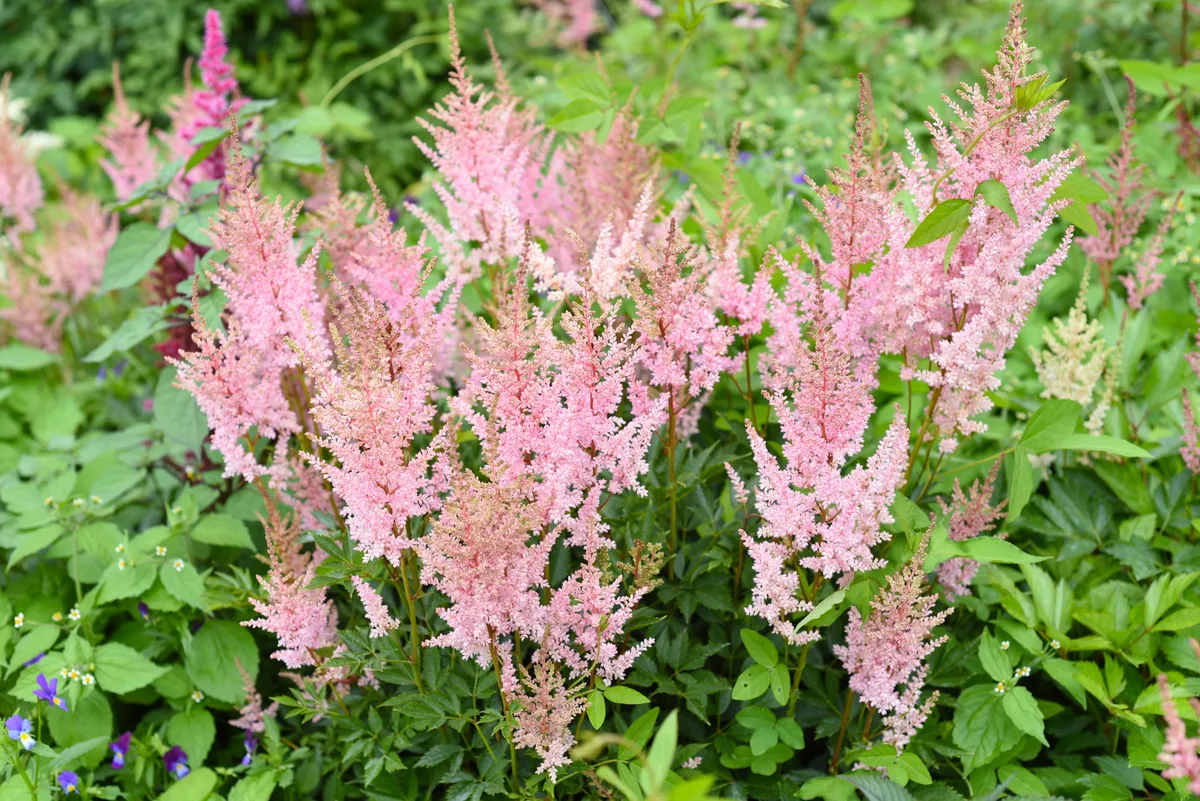
With delicate flowers and captivating colors, there’s little not to love about the Astilbe genus. Growing a few feet tall, the stalks of these plants are topped with fascinating colorful blooms that come to a point. The foliage is also soft and lush, adding to the delicate look of the plant.
Astilbes love areas of the garden that are both shady and moist, adding a pop of color to darker zones. Once in flower, you can trim the long stalks and bring them indoors to use as cut flowers, or hang them upside to dry for a more long-term display.
Horsetail
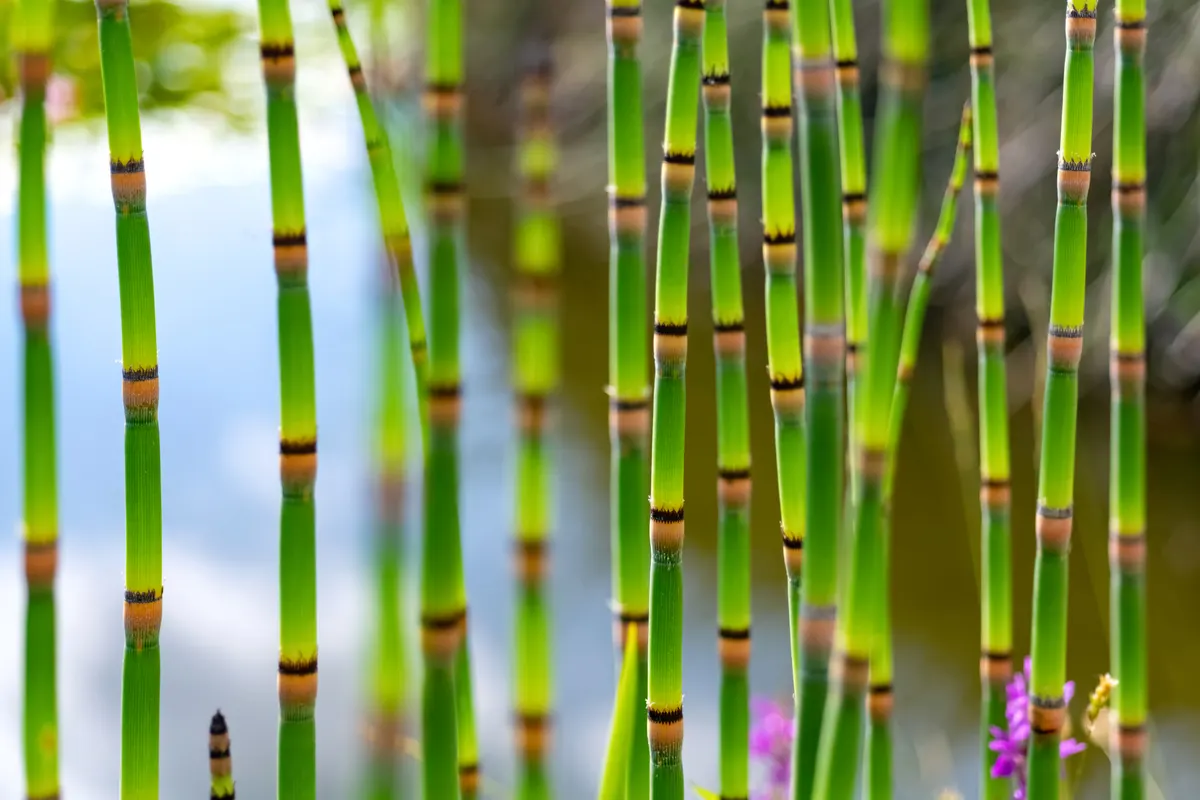
Somewhat similar in appearance to bamboo, Equisetum hyemale is a unique plant to consider for wetter areas of your garden. Growing with upright stalks that give it the appearance of an ornamental grass, this perennial grows several feet tall and is incredibly easy to care for.
Horsetail is actually so easy to grow that it spreads in almost any condition and can become invasive if not carefully controlled. This does make them wonderful for areas of the garden where nothing else will grow, including areas of standing water like ponds. But if you don’t want them to take over, it’s best to keep them inside a pot.
Papyrus
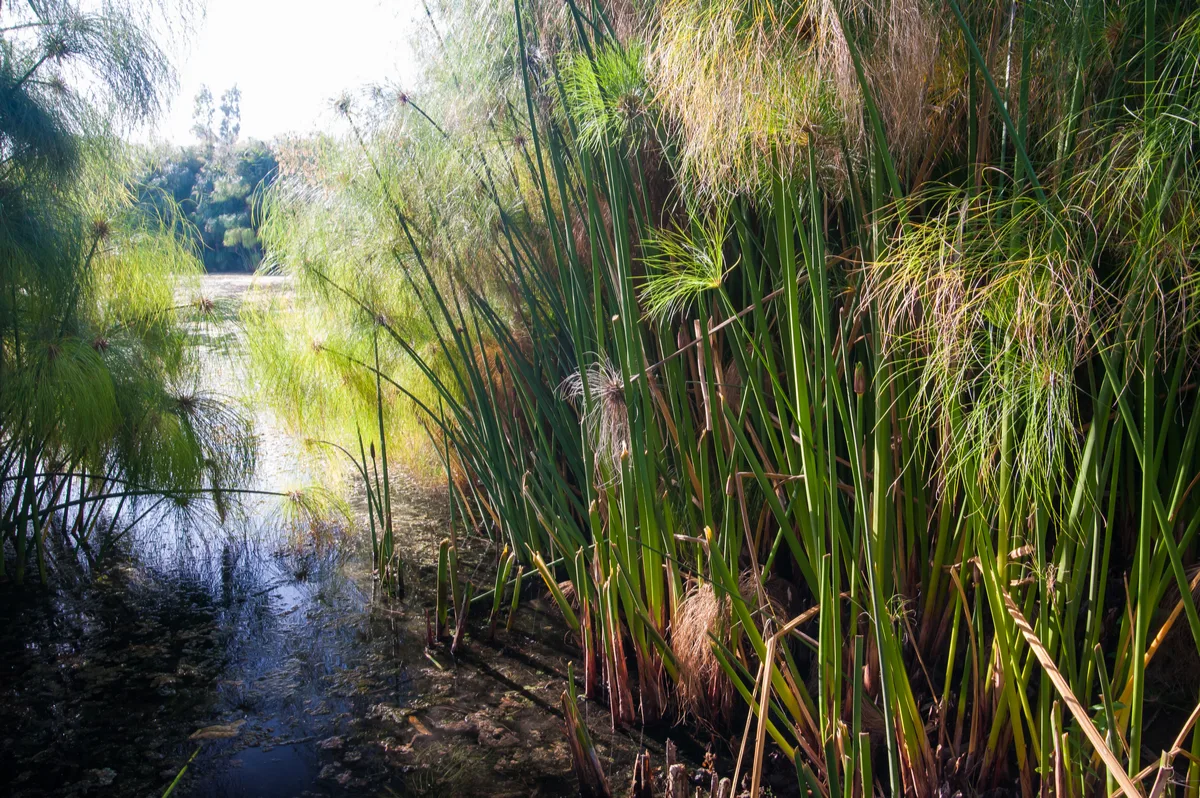
Any fans of history will likely already know all about Cyperus papyrus, commonly known by its specific epithet papyrus. Widespread in ancient Egypt, they are most famous for their use as paper, but were also used for food, clothing and furniture. And, they also make wonderful perennial plants in home gardens.
Papyrus is found growing near water sources. When planted in wet, muddy areas or even in shallow water, they grow quite quickly. Combine that with warm temperatures and you should have no trouble growing this useful plant.
Marsh Marigold
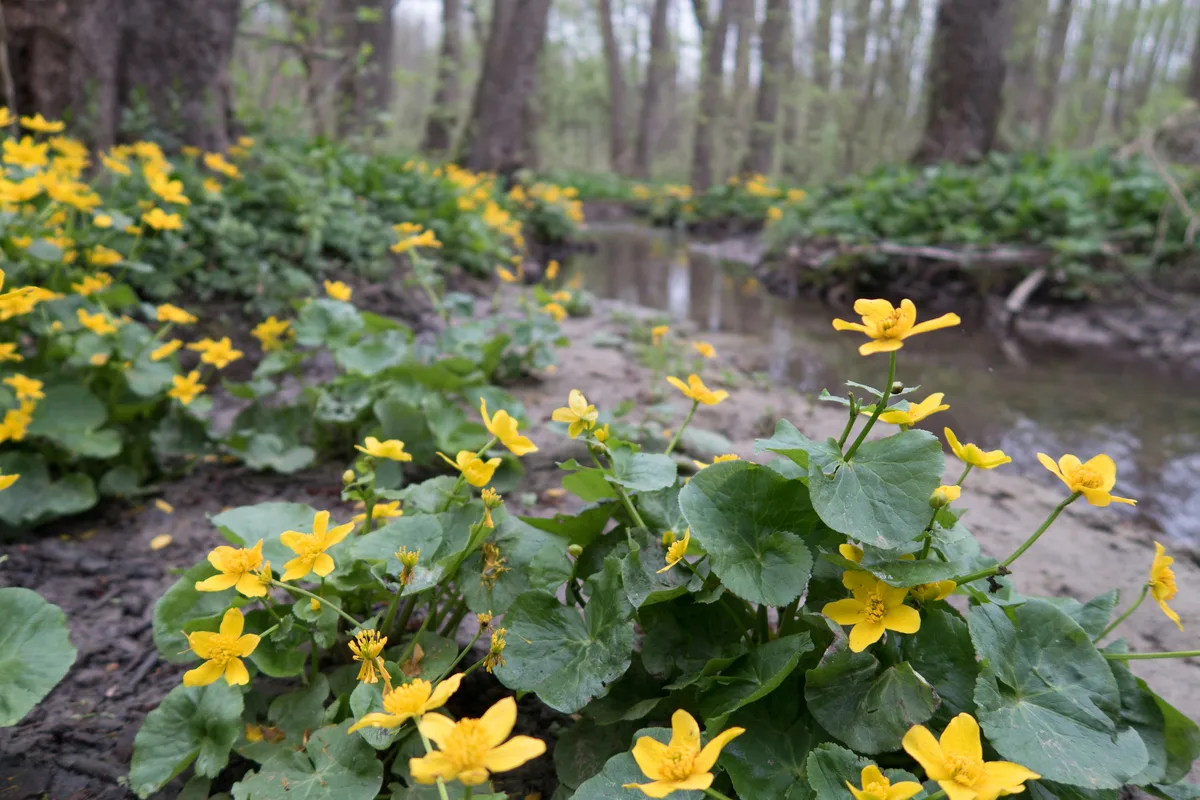
The common name of Caltha palustris is confusing in some respects and incredibly helpful in others. This plant is not actually a marigold at all and even comes from an entirely different plant family. But, the ‘marsh’ part of the name is spot on, describing the ideal growing conditions for these cute plants.
Native to North America, these plants are great for bog gardens. Their roots can be almost completely submerged in water and they will continue to bloom, producing adorable yellow clusters of flowers.
Ostrich Fern
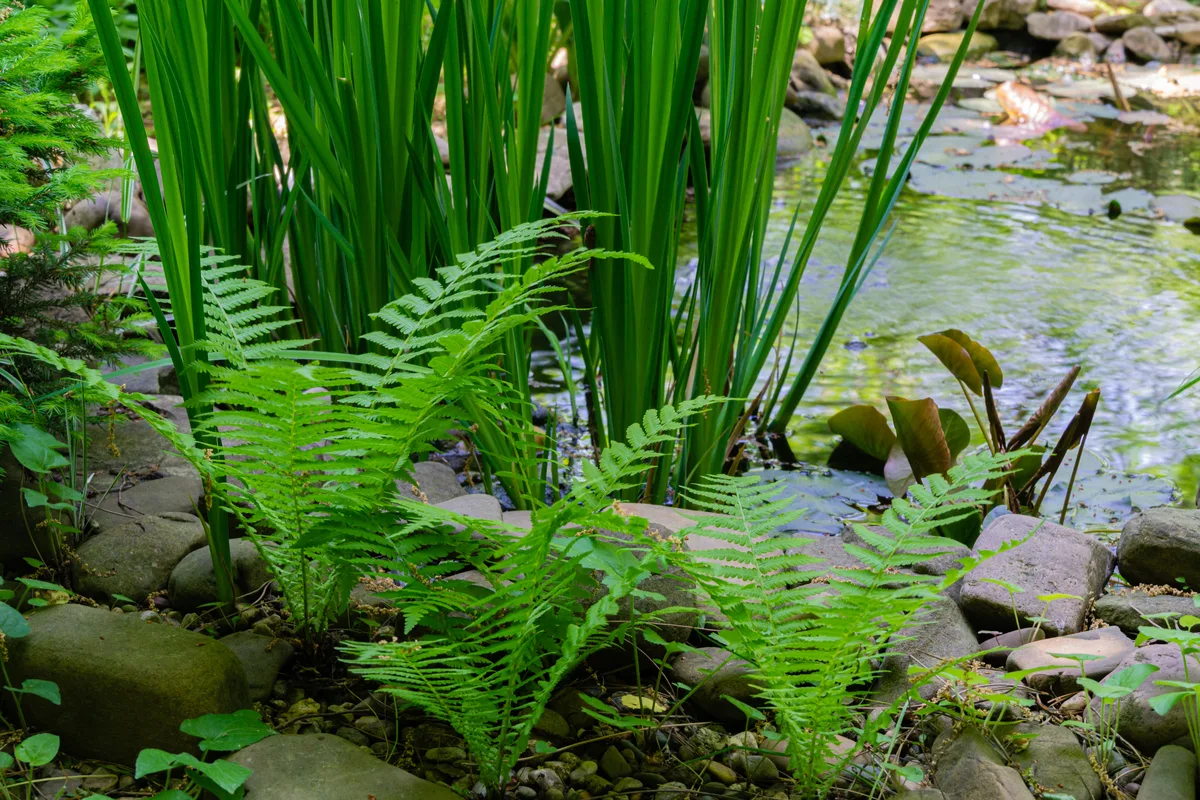
Ferns have a reputation for being somewhat difficult to care for. They love warm weather, high humidity and plenty of moisture. Luckily, when planting in a wet area, most of these conditions are already solved without much effort from you.
Ostrich ferns (Matteuccia struthiopteris) are some of the most popular outdoor ferns with a classic upright and leafy shape. Native to woodlands and marshes, they are happiest when sitting in consistently moist soil with plenty of clay. Combine that with enough shade and added nutrients and your ferns should thrive without fuss.
Royal Fern
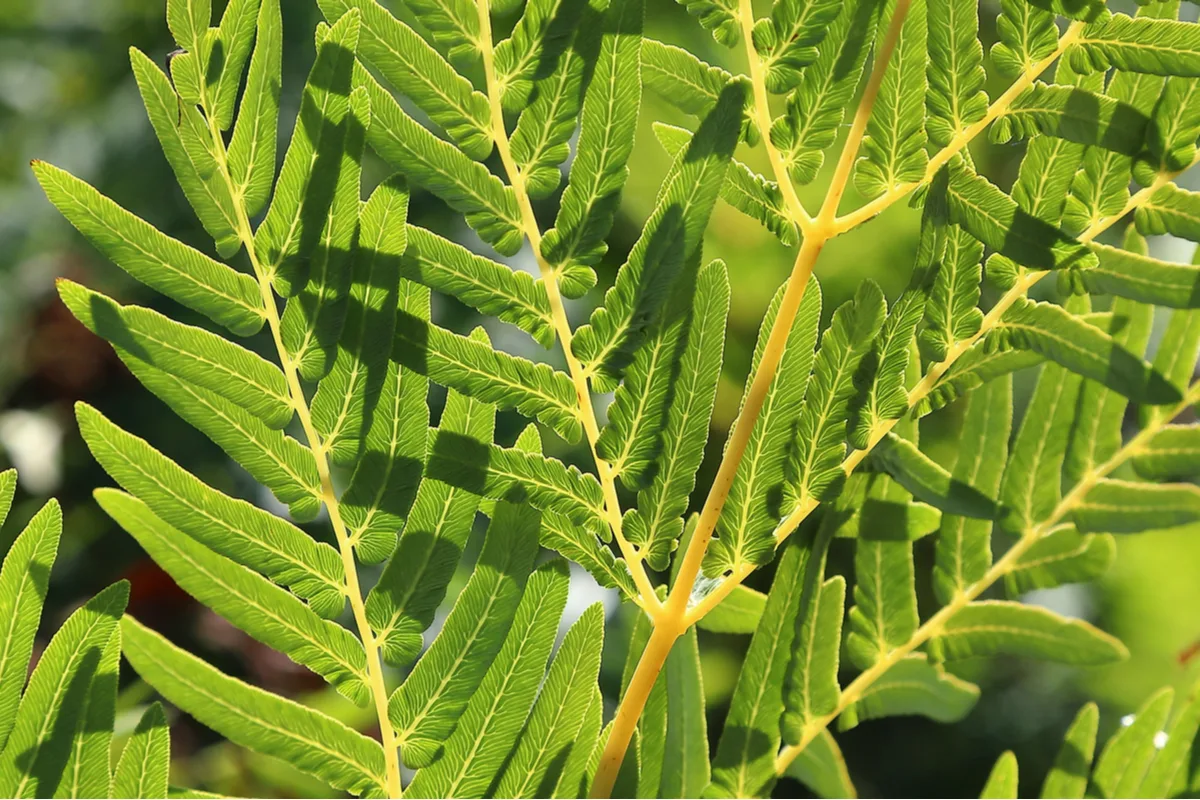
Although less common than the beloved ostrich fern, royal ferns are also a great choice for moist and shady areas of your garden. Scientifically known as Osmunda regalis, the fronds of this fern are bright green and upright, standing tall amongst other shady plants.
Royal ferns are great options for planting near streams or ponds, as long as the shade of a nearby tree protects them. In the right position, they can live for years on end happily without any intervention from you.
Ligularia
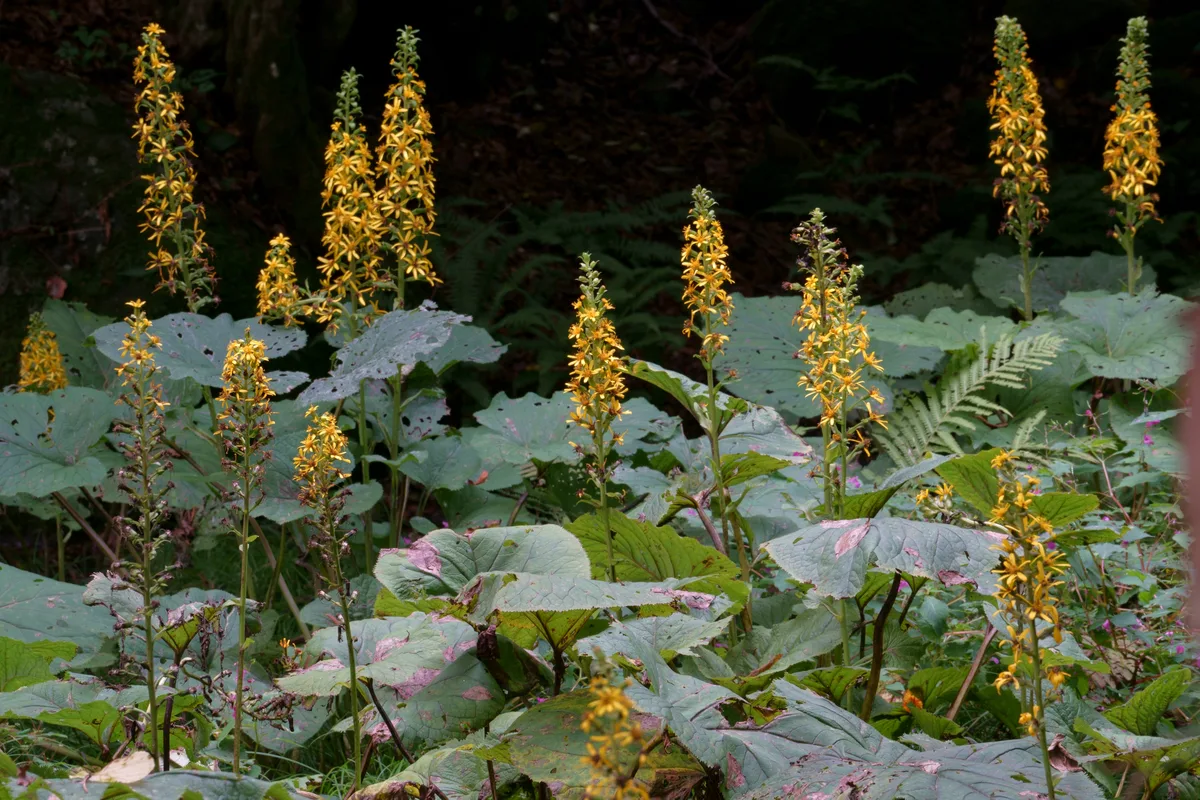
Featuring more than 100 species in a diverse genus, Ligularia is a great foliage plant for moist areas. They are also commonly called ragwort flowers, but aren’t related to the problematic weed ragwort that is part of a different genus.
The large green leaves of the Ligularia genus are a standout in shade gardens. And, when planted in the moist, marshy conditions they love, these plants will produce clusters of bright yellow flowers with different shapes, depending on the species.
Trumpet Vine
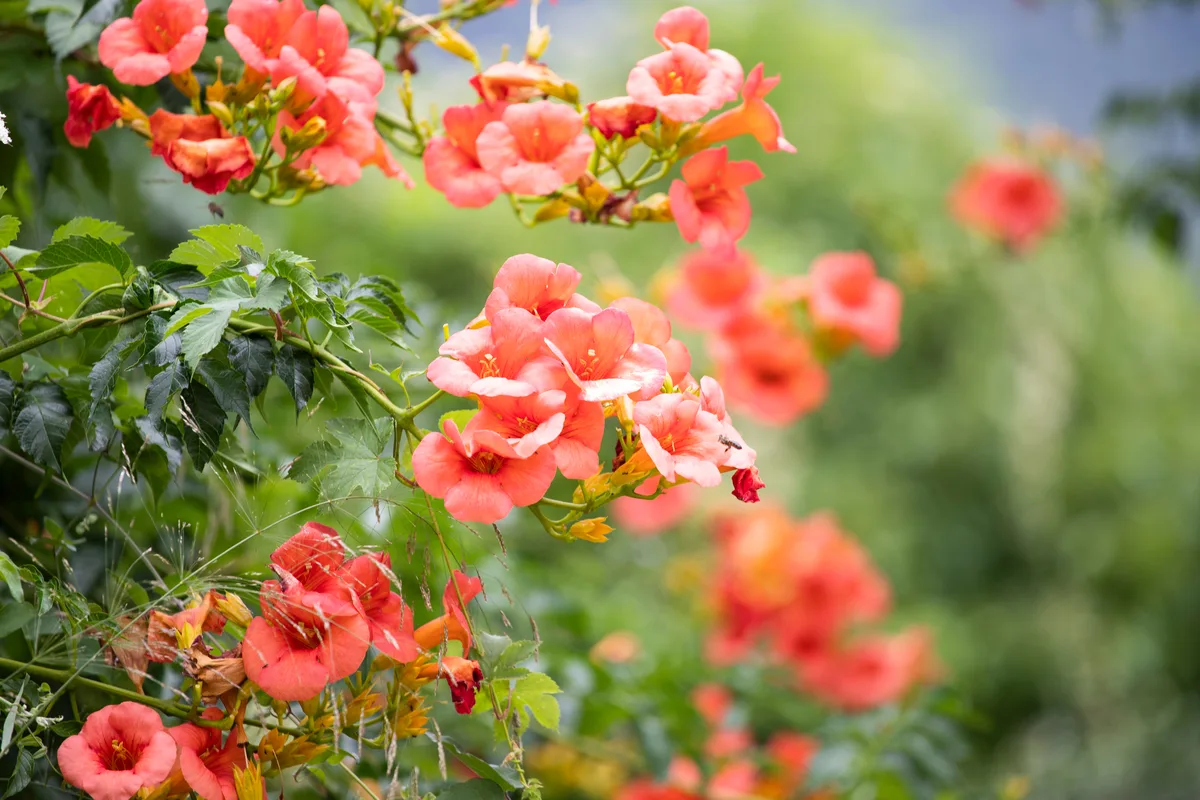
Campsis radicans is a ‘plant-it-and-forget-it’ creeper native to North America. When planted in the right spot, trumpet vine will spread rapidly without any attention. These plants are so aggressive that they frequently take over areas and need to be kept in control if you want them in your garden without killing other plants or spreading to outside environments.
As trumpet vines can grow almost anywhere without fuss, they are well suited to moist areas where other plants struggle to grow. But, before planting, make sure you are willing to put in the maintenance to keep its growth contained.
Cordgrass
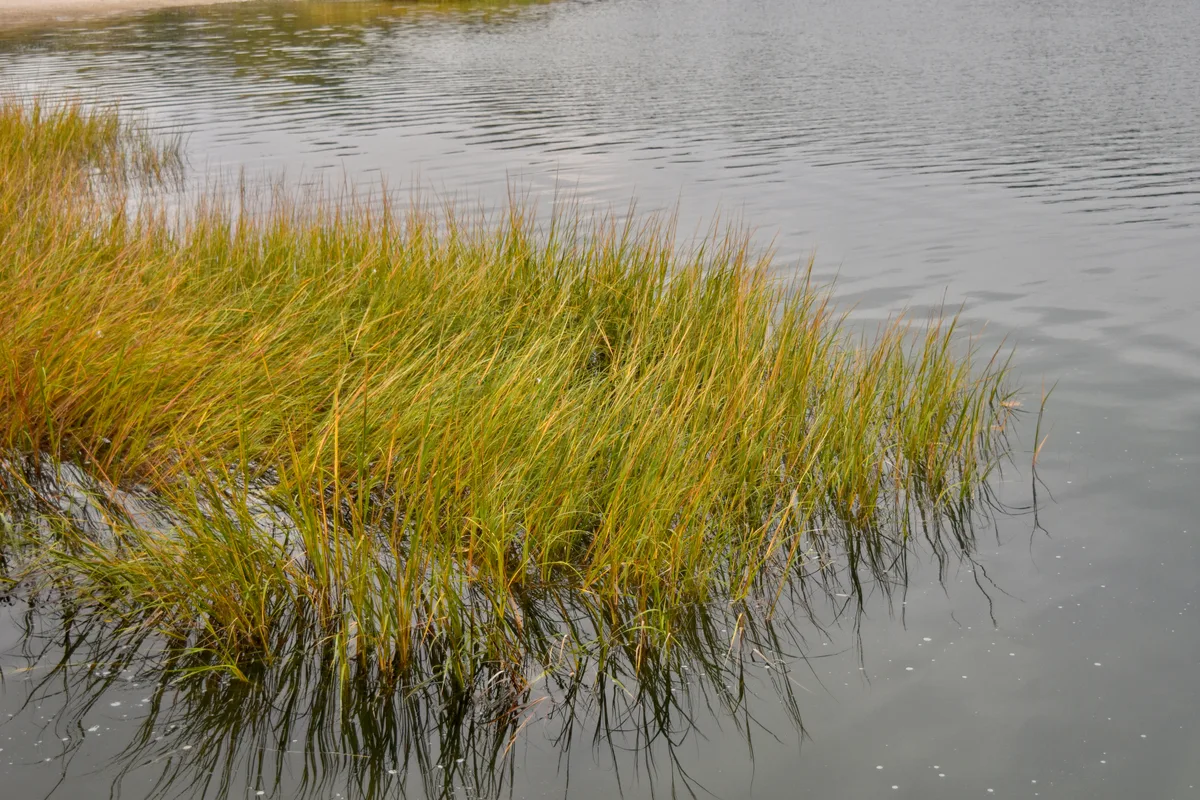
Native to coastal areas and often found growing in shallow waters, smooth cordgrass is the perfect grass for moist areas of the garden. This soft and delicate grass looks best when planted in large groups, similar to how they are found in their native North American habitats.
Cordgrass is often planted along rivers or in marshes to prevent soil erosion. They are also great hiding spots for local wildlife, attracting birds in particular to your garden. When given enough moisture, this grass with thrive with very little effort.
Waterlogged areas of the garden don’t have to be difficult or even boring. You can be sure these perennial plants will thrive in the moist areas of your garden with ease.
